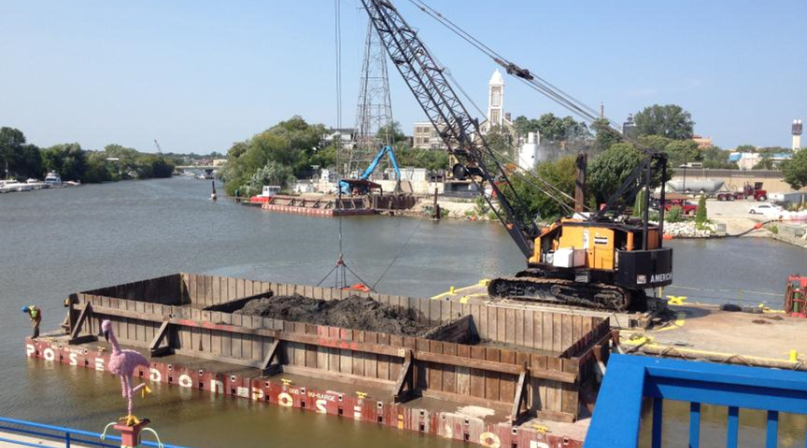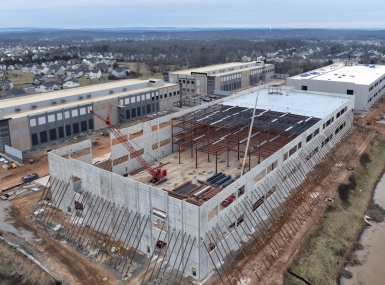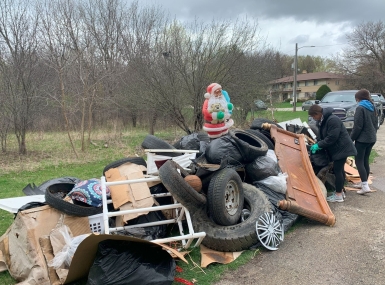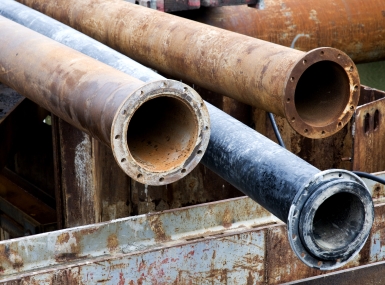County-led coalition navigates Superfund river cleanup

Key Takeaways
Adam Payne’s dad used to joke about how he would glow after swimming in the Sheboygan River while growing up in Wisconsin. When Adam Payne took over as the Sheboygan County administrator in 1999, he soon found out that his dad’s jokes weren’t that far off from the truth.
“I wasn’t here long before I found out we had an actual Superfund site on our hands,” Payne said. “We never knew it was that bad.”
The manufacturing that made Sheboygan a strong economy also left a cornucopia of carcinogens in the water.
“How do you encourage that or market people to do that when it’s ‘Yeah, build your new business or apartment next to a Superfund site,’” Payne said. “Knowing you couldn’t fish in your local river? That’s not a place people would want to live.”
Even though there was a will to fix the problem, it was hard to find a way to tackle such a significant task. Eventually, Payne and Sheboygan County helped the community lead the way to finally clean up what was becoming a 14-mile eyesore for the region. It wasn’t a drinking water source for the county, but the issue remained that the concentration of carcinogens in the water made it unsuitable for swimming or fishing.
Sheboygan County took the lead coordinating the river-dredging committee, roping together the Environmental Protection Agency’s Great Lakes National Program Office, the state Department of Natural Resources (DNR), the city, the Army Corps of Engineers and the entities responsible.
“It was just a perfect storm where all these entities came together and some real strong leadership from the Environmental Protection Agency, just really strong people, came together and joined us at the table,” Payne said.
“We started holding these meetings and asking what could be done,” he said. “How do we draw resources together? How do we all collaborate to leverage our resources to actually stretch and clean the Sheboygan River and harbor? Not only for the benefit of the environment and future generations, but our economic development and the livability of our salmon.”
In 2009, with the Great Recession’s aftershocks still rocking the national economy, the county, the city and the DNR put in some seed money, a few hundred thousand dollars. Ultimately we leveraged upwards of $100 million to do all of this dredging to do all of these improvements.
The approximately $107 million project funded a 24-hour-a-day operation dredging 400,000 cubic yards of the river. That pace meant a truck would leave the site every 3-5 minutes for an offsite landfill in 2011 and 2012, during the dredging.
“It was enough to fill Lambeau Field up to the 45th row,” Payne said.
Ten years later, the county is still waiting for the EPA to take the Sheboygan River off the Superfund site list, but the work is already paying off. In 2018, a consent decree was finalized for the NRDA (Natural Resource Damage Assessment) process. More than $60 million in new residential development is now adjacent or very close to the river—unthinkable a decade ago.
“A lot of times it felt like we were taking two steps back for every step forward,” Payne said. “It just was a very challenging process. But at the end of the day, as I think of my career if I have a top 10, it’s definitely on there, because of all of the intergovernmental cooperation, public and private entities pulling together to get it done.”
Attachments
Related News

Counties try to keep data center development in bounds
Once a cash cow, data center development is becoming a more delicate planning issue for counties, particularly as AI use drives demand.

New trails in Milwaukee County help curtail illegal park dumping
While new fines will help defray cleanup costs, Milwaukee County, Wis. Parks hopes making it harder to reach remote places will reduce illegal dumping.

EPA announces proposed Lead and Copper Rule Improvements
EPA announces proposed Lead and Copper Rule Improvements.
